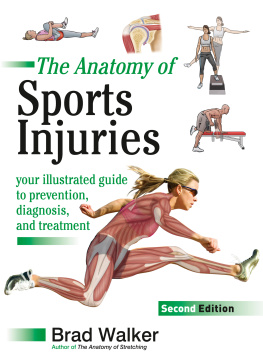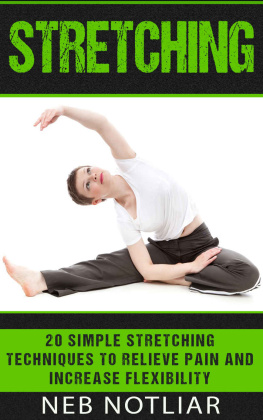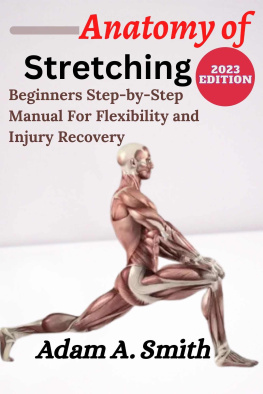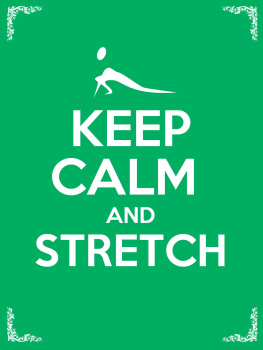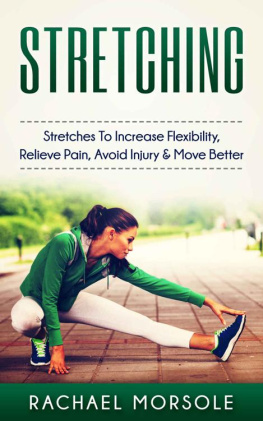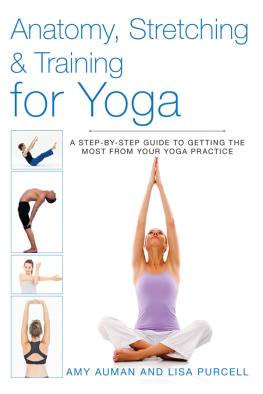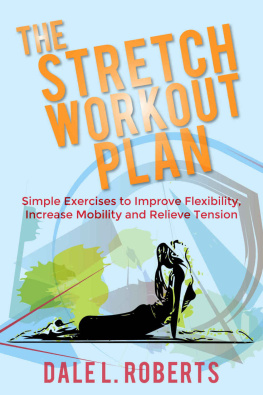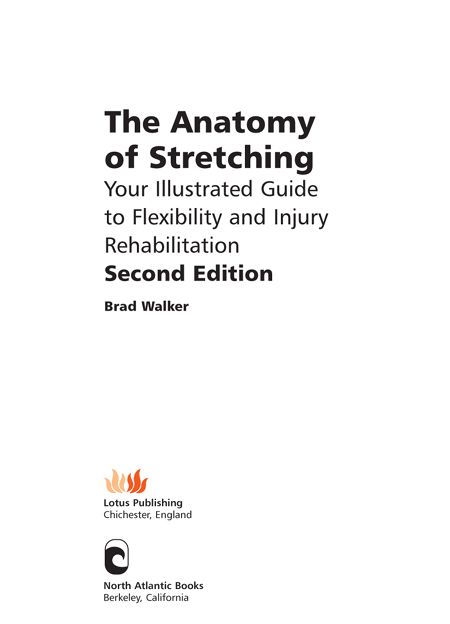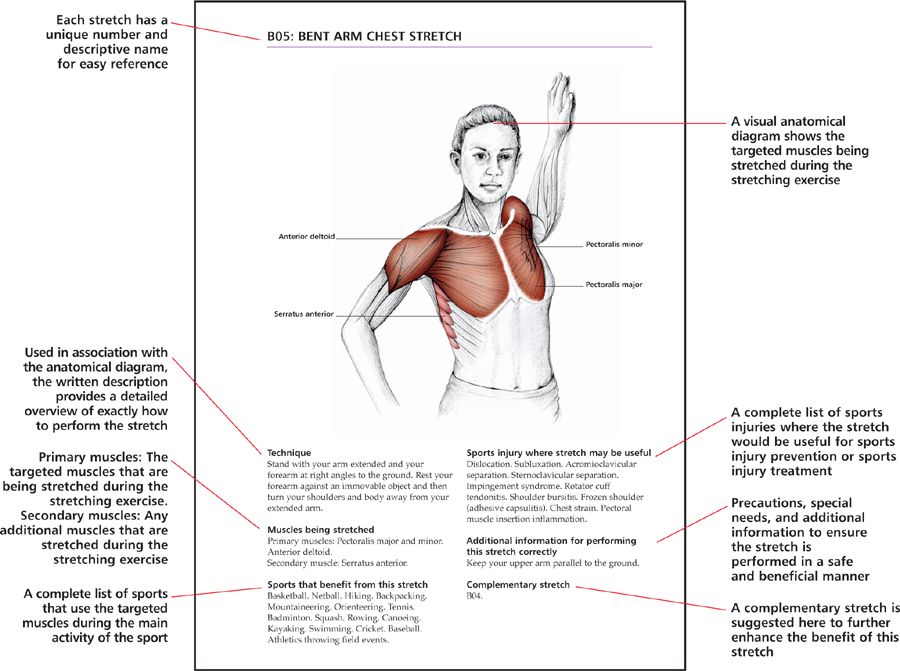Copyright 2007, 2011 by Brad Walker. All rights reserved. No portion of this book, except for brief review, may be reproduced, stored in a retrieval system, or transmitted in any form or by any means electronic, mechanical, photocopying, recording, or otherwise without the written permission of the publisher. For information, contact Lotus Publishing or North Atlantic Books.
First published in 2007. This revised second edition published in 2011 by
Lotus Publishing
Apple Tree Cottage, Inlands Road, Nutbourne, PO18 8RJ and
North Atlantic Books
P.O. Box 12327
Berkeley, California 94712
Drawings Pascale Pollier and Amanda Williams
Cover Design Jim Wilkie
The Anatomy of Stretching is sponsored by the Society for the Study of Native Arts and Sciences, a nonprofit educational corporation whose goals are to develop an educational and cross-cultural perspective linking various scientific, social, and artistic fields; to nurture a holistic view of arts, sciences, humanities, and healing; and to publish and distribute literature on the relationship of mind, body, and nature.
MEDICAL DISCLAIMER: The following information is intended for general information purposes only. Individuals should always see their health care provider before administering any suggestions made in this book. Any application of the material set forth in the following pages is at the readers discretion and is his or her sole responsibility.
The British Library Cataloguing has cataloged the printed edition as follows:
A CIP record for this book is available from the British Library
eBook ISBN: 978-1-58394-730-2
ISBN 978 1 905367 29 0 (Lotus Publishing)
Trade Paperback ISBN 978 1 55643 596 6 (North Atlantic Books)
The Library of Congress has cataloged the first edition as follows:
Walker, Brad, 1971
The anatomy of stretching / Brad Walker.
p. cm.
ISBN-13: 978-1-55643-596-6 (pbk.)
ISBN-10: 1-55643-596-7 (pbk.)
1. Stretching exercises. I. Title.
RA781.63.W35 2006
613.7182dc22
2006022377
Heres Where You Get $97 Worth of Bonus Information, Just for Purchasing This Book: www.StretchingBonus.com
Find all the answers to your questions about stretching for maximum performance and injury reduction with the free Stretching Tips ebook. The 1-hour MP3 audio presentation takes you beyond the basics and discusses little-known stretching secrets that will revolutionize the way you think about stretching and flexibility.
v3.1
Contents
How to Use This Book
The Anatomy of Stretching is designed to provide a balance of theoretical information about the fundamentals of stretching and flexibility anatomy and physiology, and the practical application of how to perform 135 unique stretching exercises. All the stretching exercises are indexed according to what part of the body is being stretched and further information is provided on exactly which muscles are being targeted.
As well as a detailed anatomical drawing, each stretch section includes a description of how the stretch is performed, a list of sports and sports injuries that the stretch is most beneficial for, and additional information about any common problems associated with this stretch.
The information about each stretch is presented in a uniform style throughout. An example is given below, with the meaning of headings explained in bold.
Introduction
The subject of stretching and flexibility has evolved considerably over the last fifteen to twenty years. Long gone are the days when the topic of stretching was relegated to a few pages at the back of books on health and fitness, or when a dozen stick figures performing the most basic of stretching exercises was considered a detailed reference.
Fifteen years ago it was hard to find a text specifically on stretching, but today there are dozens of references. Everything from New Age stretching techniques to martial arts stretching and the very detailed clinical application of stretching for academics has been written.
When The Anatomy of Stretching was originally published in 2007 it was the first book to cover the topic of anatomy and physiology for stretching and flexibility. Since then others have been written, but no other book on the subject contains more examples of stretching exercises, or is able to take detailed anatomical information and present it in a way that is easy for everyone to understand.
This is where The Anatomy of Stretching is different: it is able to take you inside the body and show you both the primary and secondary muscles in action during the stretching process.
The Anatomy of Stretching looks at stretching from every angle, including physiology and flexibility; the benefits of stretching; the different types of stretching; rules for safe stretching; and how to stretch properly. Aimed at fitness enthusiasts of any level, as well as fitness pros, The Anatomy of Stretching also focuses on which stretches are useful for the alleviation or rehabilitation of specific sports injuries.
Plus in this second edition, over 20 new stretches have been added; the chapter on physiology has been expanded; more detailed anatomy has been included with each stretching chapter; and a new numbering system has been included to help reference each stretch.
Written as a visual aid for athletes and fitness professionals, The Anatomy of Stretching gives readers a balance of theoretical information about the fundamentals of stretching and flexibility anatomy and physiology, and the practical application of how to perform 135 unique stretching exercises.
Divided into stand-alone sections, The Anatomy of Stretching does not have to be read from cover-to-cover to take advantage of the information it contains. If you would like to see how a muscle works, refer to .
Whether you are a professional athlete or a fitness enthusiast, a sports coach or personal trainer, a physical therapist or sports doctor, The Anatomy of Stretching will benefit you.

Flexibility, Anatomy, and Physiology
Fitness and Flexibility
An individuals physical fitness depends on a vast number of components; flexibility is only one of these. Although flexibility is a vital part of physical fitness, it is important to see it as only one spoke in the fitness wheel. Other components include strength, power, speed, endurance, balance, coordination, agility, and skill.
Although particular sports require different levels of each fitness component, it is essential to plan a regular exercise or training program that covers all the components of physical fitness. Rugby and American football (gridiron), for example, rely heavily on strength and power; however, the exclusion of skill drills and flexibility training could lead to serious injury and poor performance. Strength and flexibility are of prime concern to a gymnast, but a sound training program would also improve power, speed, and endurance.


